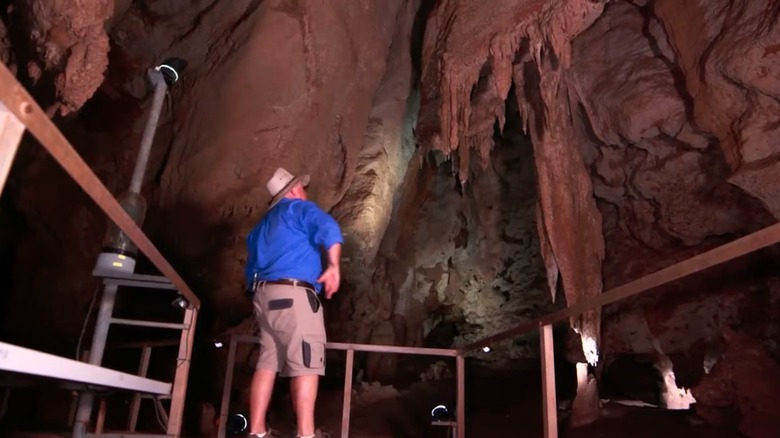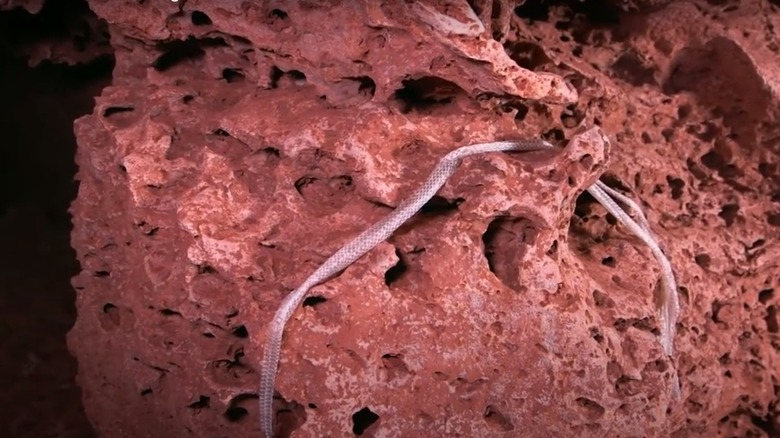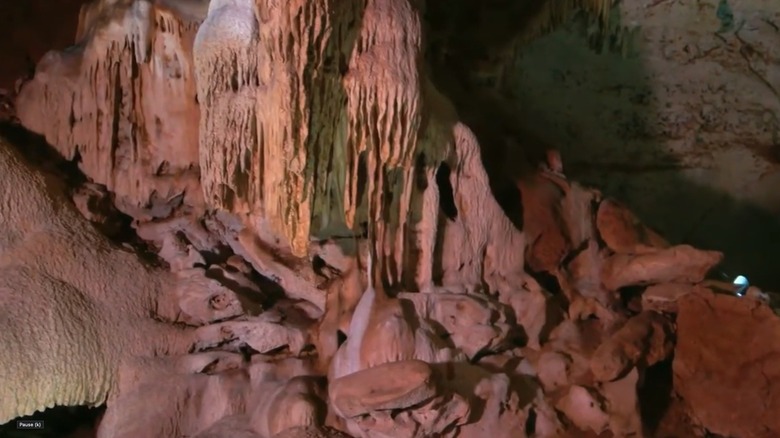The Dangerous Reason This Tourist Hot Spot In Australia Closes For Nearly Half The Year
You enter a dark cave, lit only by a flashlight, listening to water drip from the limestone stalactites onto the ground. What is that thing the flashlight is illuminating in a small crevice on the wall? Is that a ... snake? Wait, what was that noise behind you? Whether you love them or they scare the pants off of you, caves are fascinating places. Humans use them as metaphors for the unknown. Some have been sacred, some have been the site of horrors, and some are just wonderful places to visit.
However, there is a pretty dangerous reason you should never go inside a certain cave tour site in Australia without a guide when it's closed for almost half a year. This place is the Cutta Cutta Caves in Australia's northern region, just under 19 miles south of Katherine, and part of the 1499-hectare Cutta Cutta Caves Nature Park. Let's take a look at the caves, what you need to know before you go, and why you can only enter the Cutta Cutta Caves with a tour (and only during certain months).
What you'll find in the Cutta Cutta Caves
First, let's talk about what you'll find in the cave system. In case you were wondering, Cutta Cutta means "place of many stars" in the language of the Jawoyn, the traditional custodians of the land. This cave was once called "Smith's Cave" at the beginning of the 20th century when a herder with the last name Smith lost some cattle down there. Later, it was used for target practice during WWII, and it was called "16 Mile Cave." In 1967, the place was given to what is now the Parks and Wildlife Service and was renamed Cutta Cutta in 1979.
The Cutta Cutta Caves are made of limestone or karst, among the only caves of that sort in the region. While exploring, you might even see some fossils of ancient trilobites that were around during their formation. Of course, the caves are home to other creatures as well, including five species of bat (like the ghost bat and orange horseshoe bat), the common brown tree snake, and two species of blind shrimp that live in the water inside. The temperature is lower inside than it is in the very warm northern part of Australia, where the cave system is, and many animals seek it out for just that reason.
What to know about the Cutta Cutta Caves
The Cutta Cutta Caves have walkways inside, as well as tour guides who know them well, so what is the issue for half the year? It's the weather. These caves flood during the wet season, making it very dangerous to go inside. From April through October, there are tours leaving around every hour from 9 a.m. to 3 p.m., which you can book at the cave kiosk. From November through March, there are none, and you are not permitted to enter alone. (You can check this government parks website to see whether they're open or closed before you go.)
When the tours are running, however, they're a great place to visit with the entire family. You'll hit the ticket kiosk, which also has water, snacks, bathrooms, a picnic area, and things to buy. Then, you'll be taken on a 400-yard walk to the cave entrance. Tourgoers also have the option to take a 710-yard Karst Walk back to the parking area.
There are a few other things to know about the Cutta Cutta Caves. You can only use a drone here if you have a permit, and those have to be acquired in advance. While you're there, do not touch any rock formations. It's a good idea to bring some bug spray, and you should be wearing closed-toed shoes. It can get chilly down there, so dress in layers.


